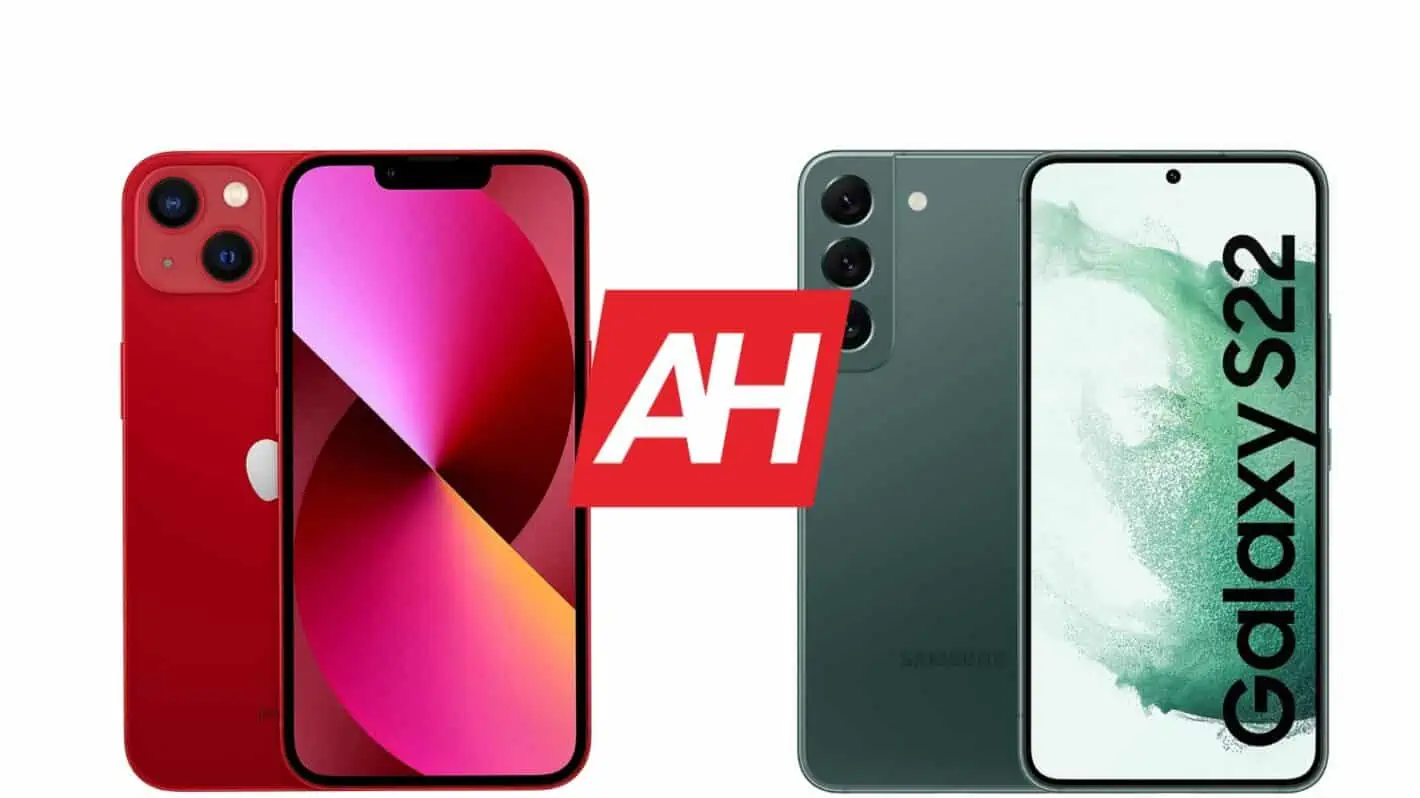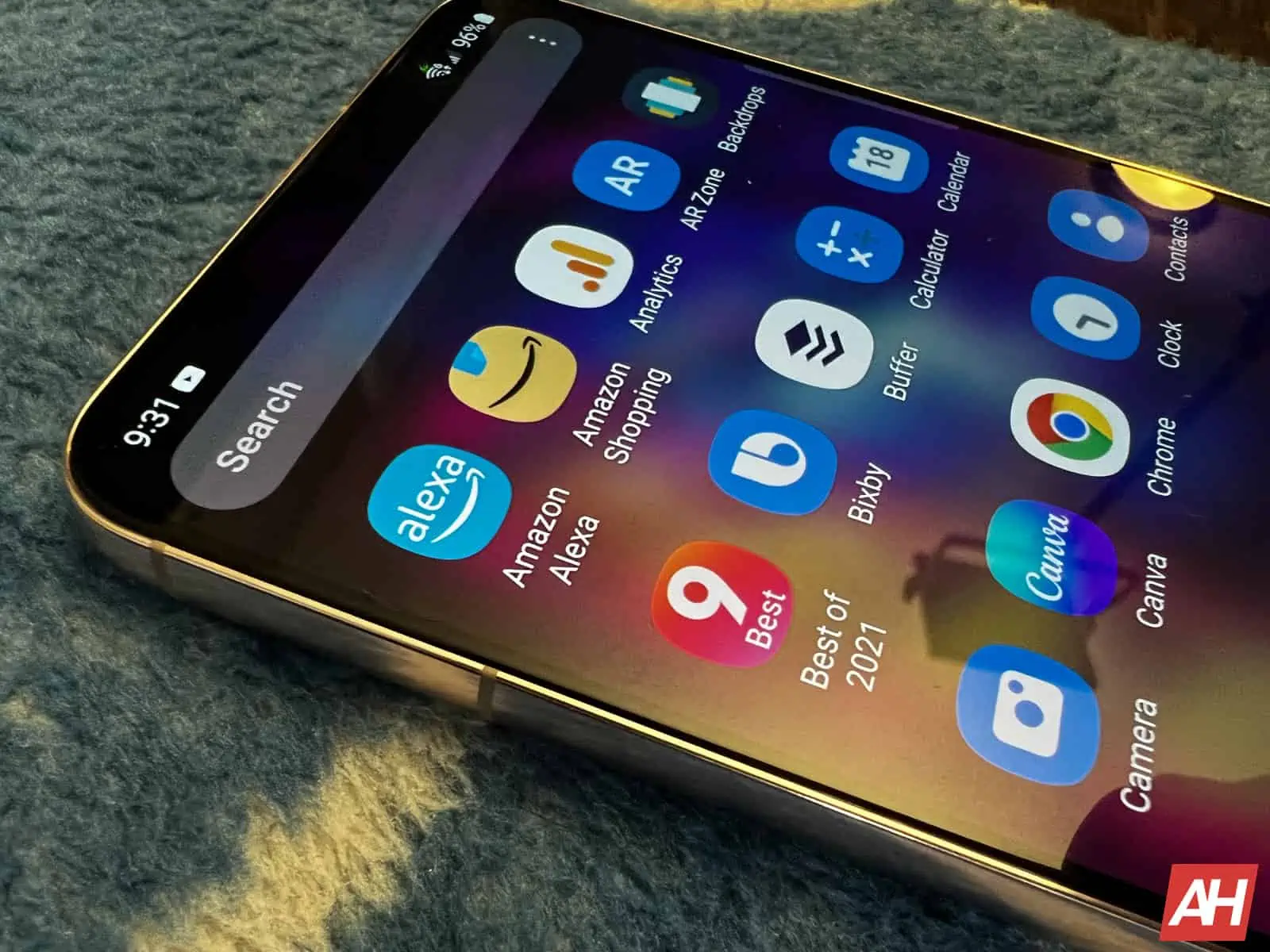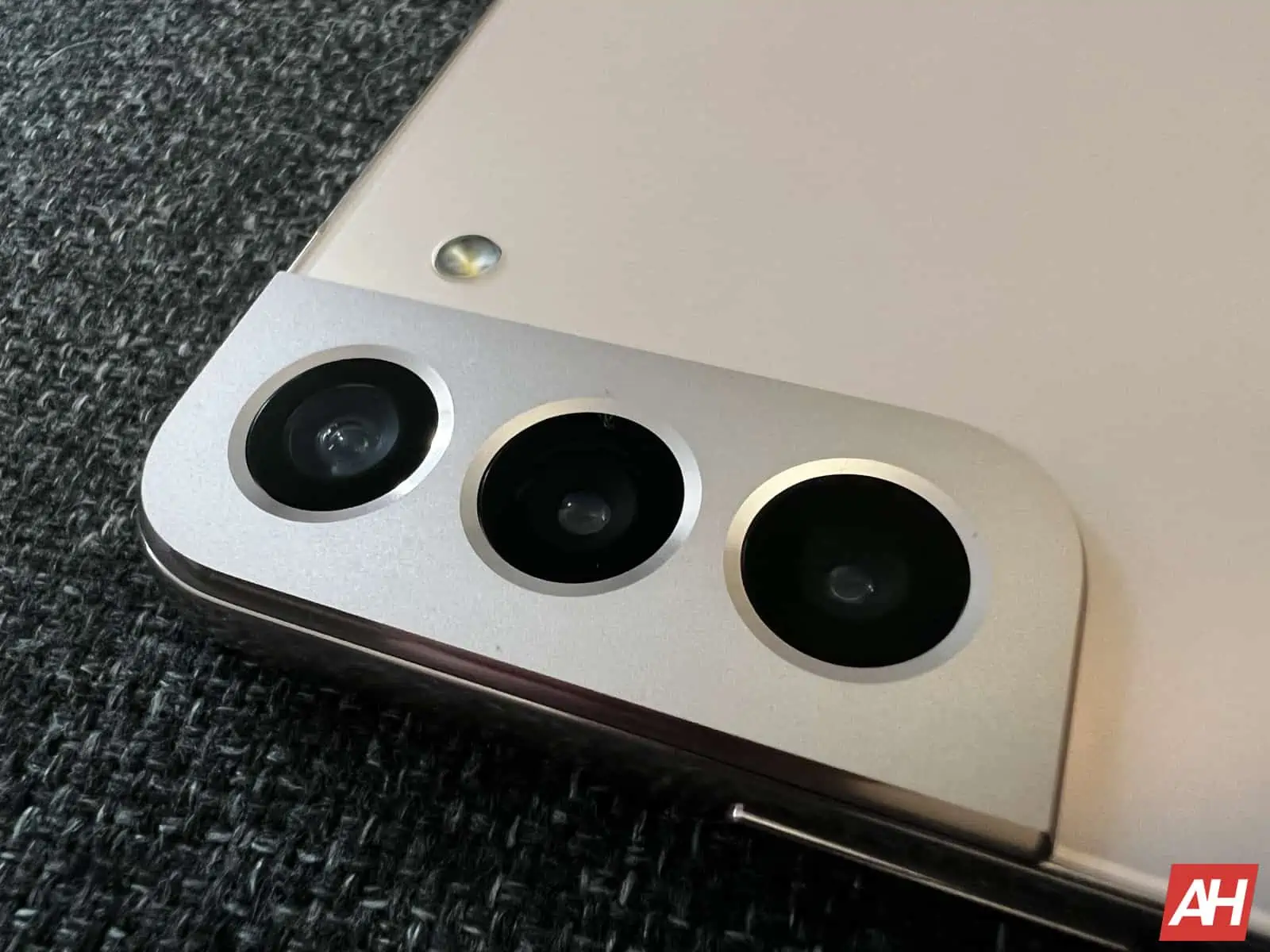We’ve already compared several flagship iPhone 13 and Galaxy S22 models, but not the vanilla ones. In this article, we’ll compare the Apple iPhone 13 vs Samsung Galaxy S22. These two smartphones are similar in regards to size, and are direct competitors in basically every way. The two phones are quite different, though, which should make this comparison rather interesting.
The two of them differ in a lot of ways. The most obvious one is design-related, as they both look considerably different, but also feel different in the hand. Their specifications are also not that similar, though there are some similarities. Software builds are, of course, entirely different, and so on. We’ll kick things off by listing their specifications, and take it from there. Let’s kick off the Apple iPhone 13 vs Samsung Galaxy S22 comparison, shall we?
Specs
| Apple iPhone 13 | Samsung Galaxy S22 | |
| Screen size | 6.1-inch fullHD+ Super Retina XDR OLED display (60Hz) | 6.1-inch FullHD+ Dynamic AMOLED 2X display (120Hz adaptive refresh rate) |
| Screen resolution | 2532 x 1170 | 2340 x 1080 |
| SoC | Apple A15 Bionic | Qualcomm Snapdragon 8 Gen 1 or Samsung Exynos 2200 |
| RAM | 4GB | 8GB (LPDDR5) |
| Storage | 128GB/256GB/512GB, non-expandable | 128GB/256GB, non-expandable |
| Rear cameras | 12MP (f/1.6 aperture, 26mm lens, 1.7um pixel size, dual pixel PDAF, sensor-shift OIS) 12 MP (f/2.4 aperture, 120-degree FoV, 13mm lens) |
50MP (f/1.8 aperture, 24mm lens, OIS, Dual Pixel PDAF, 1.0um pixel size) 10MP (f/2.4 aperture, 70mm lens, telephoto, 1.0um pixel size, OIS, PDAF, 3x optical zoom) 12MP (ultrawide, f/2.2 aperture, 13mm lens, 120-degree FoV, 1.4um pixel size) |
| Front cameras | 12MP (f/2.2 aperture, 23mm wide-angle lens) | 10MP (f/2.2 aperture, 1.22um pixel size, 26mm lens, Dual Pixel PDAF) |
| Battery | 3,240mAh, non-removable, 23W wired charging, 15W MagSafe wireless charging, 7.5W Qi wireless charging | 3,700mAh, non-removable, 45W wired charging, 15W Qi wireless charging, 5W Wireless PowerShare |
| Dimensions | 146.7 x 71.5 x 7.7mm | 146 x 70.6 x 7.6mm |
| Weight | 174 grams | 167 grams |
| Connectivity | 5G, LTE, NFC, Bluetooth 5.0, Wi-Fi, USB Type-C | 5G, LTE, NFC, Bluetooth 5.2, Wi-Fi, USB Type-C |
| Security | Advanced facial scanning | In-display fingerprint scanner (ultrasonic) |
| OS | iOS 15 | Android 12 One UI 4.1 |
| Price | $799 | $799 |
| Buy | Apple | Samsung |
Apple iPhone 13 vs Samsung Galaxy S22: Design
When it comes to the design, well, they’re quite different. Their overall size is similar, and their build materials, but that’s basically where similarities end. The iPhone 13 has a more boxy shape, and thus feels entirely different in the hand. It also includes a flat display, unlike the Galaxy S22. The iPhone 13 has a notch at the top of the display, while the Galaxy S22 has a centered display camera hole.
Bezels are extremely thin on both devices, though the Galaxy S22 does look more modern from the front due to that display camera hole. The Galaxy S22 includes all physical buttons on the right-hand side, while the iPhone 13’s are separated between the left and right sides. The iPhone 13 has a regular-looking camera island on the back, while the Galaxy S22’s camera island is an extension of the phone’s frame. Those cameras are also aligned differently, of course.
The Galaxy S22 does feel more slippery due to its shape and display curvature. The two phones are almost identically tall, while the Galaxy S22 is a bit narrower. They’re also almost identical when it comes to thickness. The Galaxy S22 is slightly lighter than the iPhone 13, while both phones are made out of metal and glass. Both are quite compact by today’s standards, though also quite different, so it’s all a matter of preference, of course.
Apple iPhone 13 vs Samsung Galaxy S22: Display
The Apple iPhone 13 features a 6.1-inch 2532 x 1170 Super Retina XDR OLED display. Unfortunately, it only offers a 60Hz refresh rate. This panel supports HDR10 content, and also comes with Dolby Vision support, while it is flat. It gets quite bright at 1,200 nits of peak brightness, and we’re looking at a 19.5:9 display aspect ratio here. The display itself is protected by scratch-resistant ceramic glass, while the phone has an 86-percent screen-to-body ratio.
The Galaxy S22, on the other hand, includes a 6.1-inch fullHD+ (2340 x 1080) Dynamic AMOLED 2X panel. This display is curved, and it supports a 120Hz refresh rate. It also supports HDR10+ content, and it gets quite bright at 1,300 nits of peak brightness. This display offers a 19.5:9 aspect ratio. The Gorilla Glass Victus+ protects the Galaxy S22’s display, by the way.
As you can see, both of these panels look great on paper. Is that the case in real-life as well, though? Well, yes, it is. Truth be said, you’ll be happy with either one, unless you’re really used to high refresh rate displays, in which case you’ll want to go with the Galaxy S22. Other than that, the two panels are on par with each other. They’re bright, vivid, and offer great viewing angles. Touch sensitivity is also really good on both, and so on. Do note that one is flat and the other curved, though, in case that makes a difference for you.
Apple iPhone 13 vs Samsung Galaxy S22: Performance
On paper, both of these phones look quite powerful in the performance department. The iPhone 13 comes with one of the most powerful mobile chips on the market, if not the most powerful one, the Apple A15 Bionic. It also includes 4GB of RAM, and NVMe storage. The Galaxy S22 comes in two different SoC variants. One model includes the Snapdragon 8 Gen 1, the other the Exynos 2200. 8GB of LPDDR5 RAM is also included, along with UFS 3.1 flash storage.
Now, do note that the performance between the Snapdragon 8 Gen 1 and Exynos 2200 models does differ. The Exynos 2200 models did have some performance issues until the recent update, which seems to have improved things. The Snapdragon 8 Gen 1 variant was working really well from the get-go, but they do get quite warm during more intense workloads. Do note that the Exynos 2200 variant is only sold in Europe, the Snapdragon 8 Gen 1 is included everywhere else.
In general, both phones perform really well. They can handle everyday tasks without a problem, including multitasking, browsing, multimedia consumption, and so on. Gaming is also really good on both smartphones, and so forth. Just make sure to install the latest update on the Exynos 2200, otherwise you may have performance issues. All in all, both phones do perform well, as they should, considering these are flagship-grade devices.
Apple iPhone 13 vs Samsung Galaxy S22: Battery
The iPhone 13 includes a 3,240mAh battery, while the Galaxy S22 comes with a 3,700mAh unit. iOS and Android handle battery consumption differently, though, and iPhone’s generally need less battery capacity. So, this difference is not as significant as it seems. In fact, the iPhone 13 proved to be better in the battery life department than the Galaxy S22. That 3,240mAh battery is more than enough for the iPhone 13.
The Galaxy S22’s battery life isn’t the best. It has gotten better via updates, but it’s still not at the same level as the iPhone 13’s. The battery life will depend largely on your usage, location, signal, and so on, of course. You can expect somewhere between 5 and 6 hours of screen-on-time, though, at least most of you. The iPhone 13 can usually go beyond that, offering between 6.5 and 7 hours of screen on time. Once again, you may get entirely different results, depending on a number of factors, and even the SoC that is included inside the Galaxy S22 series. We used the Snapdragon model.
These phones are similar even when it comes to charging. The Apple iPhone 13 supports 23W wired charging (unofficial rating), 15W MagSafe wireless charging, and 7.5W Qi magnetic wireless charging (devices that are not MagSafe compatible). The Galaxy S22, on the other hand, offers 25W wired charging, 15W wireless charging, and 4.5W reverse wireless charging.
Apple iPhone 13 vs Samsung Galaxy S22: Cameras
The camera setups on these two phones are a bit different. The iPhone 13 includes two cameras on the back, while the Galaxy S22 has three. A 12-megapixel main wide-angle camera sits on the back of the iPhone 13, in addition to a 12-megapixel ultrawide camera. The Galaxy S22 has a 50-megapixel main camera, a 12-megapixel ultrawide camera, and a 10-megapixel telephoto camera.
Now, both of these phones are great camera smartphones, that’s for sure. They do provide different pictures, though. The ones from the iPhone 13 are more lifelike. You’re basically getting the iPhone 12 Pro series performance in terms of cameras. The Galaxy S22 images do usually look more punchy, and slightly unrealistic, but not to the degree of previous generations. Different people prefer different things, so it all depends on what type of pictures you prefer.
Both devices can provide plenty of details in shots, and video recording is also good on both, but the iPhone 13 has an edge in that regard. It’s a bit smoother and overall a better experience. In low light, both smartphones perform great, though the iPhone 13 aims to be a bit more lifelike with darker tones. The Galaxy S22 can really light up a scene and pull plenty of details from it. Ultrawide cameras are really good on both phones, and the telephoto one on the Galaxy S22 also performs admirably.
Audio
When it comes to audio, it’s worth noting that neither of these two phones include a 3.5mm headphone jack. What they do include is a set of stereo speakers, each. They both include two speakers, and they’re even in similar spots. The main speaker is bottom-firing, while the secondary one is front-firing.
The sound coming from those speakers is really good on both devices. The Galaxy S22 speakers are slightly louder, and we prefer them when it comes to sound as well. The sound seems to be a bit richer, but the difference is minuscule. Truth be said, both sets of speakers are really good, and not many people will find things to complain about here… well, except audiophiles.



